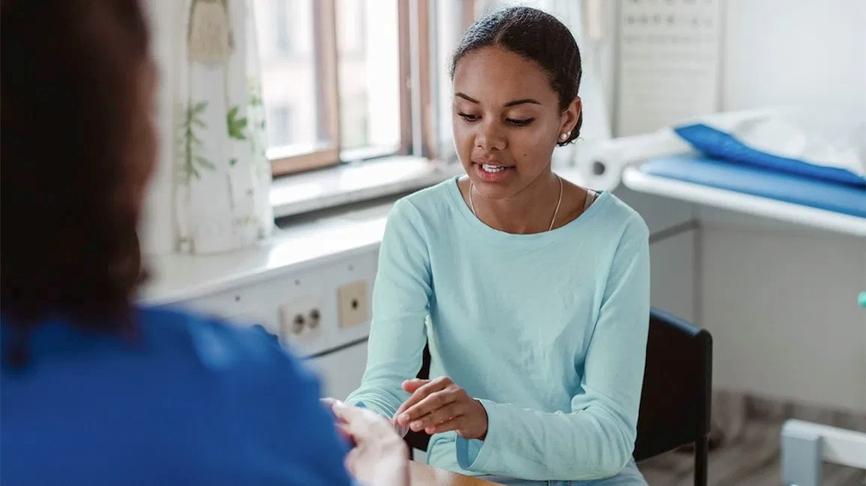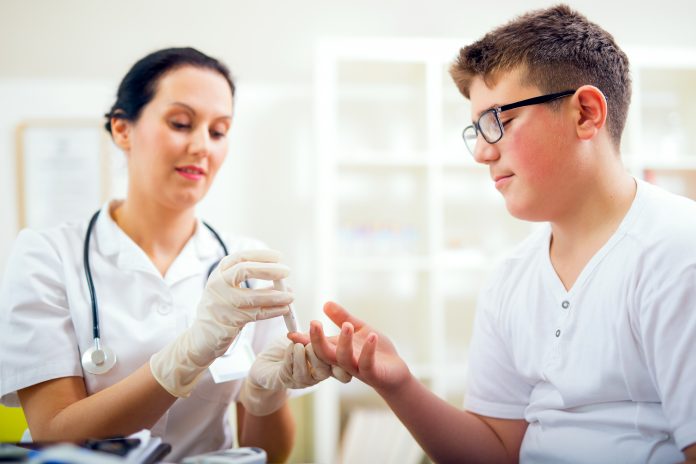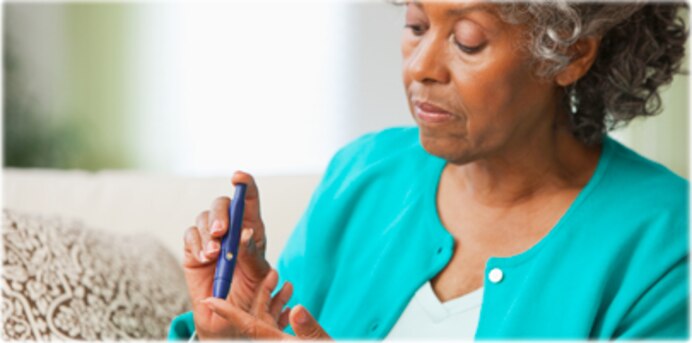People with diabetes are looking to make their Insulin.
Diabetes is a punishingly expensive disease. In an Oakland warehouse, scientists are going Do-It-Yourself.
David Anderson extracts microscopic fungus from yeast and transfers it to a test tube, which he spins in a centrifuge to separate the proteins from the rest of the broth. The next day, he injects the protein mix into an electrically charged gel, and if all goes well, the smallest protein will wiggle to the front, identifying itself as insulin.
David Anderson is not a biochemist; he didn’t even major in science in college. He is part of the Open Insulin Project, a collective that is trying to produce the life-saving drug and provide it to people with diabetes for free, or close to it.
Insulin enables cells in the body to use glucose circulating in the blood as fuel. People with Type 1 diabetes don’t produce enough insulin, while people with Type 2 diabetes have become resistant to it. Without sufficient insulin, people experience high blood sugar, or hyperglycemia, which can cause heart disease, stroke, kidney disease, and nerve damage. In severe cases of insulin insufficiency, ketoacidosis sets in, where the liver releases too many ketones into the blood, turning the blood acidic and potentially ending in death.
For people with Type 1 diabetes, insulin is as necessary as oxygen.
Diabetes has become the most expensive disease in the United States, reaching $327 billion a year in health care costs, $15 billion of which comes from insulin. And the cost of insulin keeps climbing: It tripled in price from 2002 to 2013 and nearly doubled again between 2012 and 2016. For instance, in 1996, a vial of Humalog, a standard insulin produced by Eli Lilly, cost $21. Today, the list price is $324, an increase of more than 1,400%. Without insurance, costs from diabetes care can tally up to thousands of dollars per month. As a result, 25% of the 7.4 million Americans on insulin have started to ration the drug, which can result in deadly consequences.
Open Insulin group was founded in 2015 by Anthony Di Franco, a computer scientist with Type 1 diabetes. He and his collaborators think one solution to the pricing crisis lies in enabling patients and hospitals to create insulin themselves. The group works out of Counter Culture Labs in the trendy Temescal neighborhood of Oakland.

Thornton Thompson is a molecular biologist who is part of Open Insulin. He says: “One of the big goals of the project is just to demonstrate that If we can make this stuff in our janky lab on a $10,000 a year budget, there’s no way it should cost this much”.
Scientists make insulin by inserting a gene that codes for the insulin protein into either yeast or bacteria. These organisms become mini bio-factories and start to spit out the protein, which can then be harvested, purified, and bottled. Scientists at Genentech were the first to synthesize insulin this way back in 1979 from the bacterium E. coli, and drug manufacturers have been using the method ever since.
Open Insulin’s goal is to develop a similar way to generate insulin that doesn’t infringe on any patents and can be made publicly available. The group got off to a strong start, raising $16,000 through a crowdfunding campaign in November 2015. But they ultimately failed to produce the protein from E. coli. So after a year and a half, they scrapped the work and switched to yeast.
French biochemist Yann Huon de Kermadec joined the group around that time and took over the manufacturing process. He obtained the proper insulin gene, inserted it into the yeasts’ DNA, and produced small amounts of the insulin protein. So far, though, the yields have been too low to purify, so he and Anderson — his lab assistant — are experimenting with different colonies of yeast to see if they can increase the output.
In many ways, the Open Insulin group’s ambition hearkens back to the intentions of the original discoverers of the drug. In 1923, Frederick Banting, Charles Best, and James Collip sold the patent for insulin to the University of Toronto for $1 each because they believed such an essential medicine should be available to everyone who needed it.
The original patents for the insulin molecule have long since expired, but patents on parts of the production process — a strategy that has been famously used (and arguably abused) by drug companies — remain because pharmaceutical companies keep tweaking how they make it. Most insulins sold today are synthetic analogs that have been adjusted to last longer or act faster, which is one reason pharmaceutical companies give for why the cost of insulin has skyrocketed.

*These changes have prevented generic drug manufacturers from entering the market. Eli Lilly recently announced it would
release its generic version of Humalog at half the price, but without the competition offered by a dedicated generic drug manufacturer, costs aren’t likely to drop significantly any time soon.
Insulin costs aren’t high everywhere, though. In Spain, for example, insulin costs about $6. The pharmaceutical companies that provide insulin claim the complex U.S. insurance systems drive up the price. Specifically, they place the blame on pharmaceutical benefits managers, middlemen who serve as go-betweens for drug companies and health insurers. Representatives for the three main insulin manufacturers — Eli Lilly, Sanofi, and Novo Nordisk — recently testified before Congress that the list price of the drug is inflated because of the vouchers and rebates that they provide to the benefits managers, who then pass those savings on to the health insurers. As a result, they say the net price of the drug — what the insurance companies pay — is much lower than the list price.
“It’s a very distorted system,” says Dr. Mariana Socal, a scientist at the Johns Hopkins School of Public Health. “The manufacturer publicizes that they’re charging, say, $500. They put the price very, very high, even though they claim that at the end of the day they’re going to be paid $200. So what is happening? Why do you need to say it costs $500 if you’re willing to be paid just $200? What’s happening to the other $300?”
Socal says that the rebate money is split between the insurance providers and benefits managers, and patients see none of the savings. If you’re uninsured, you pay the list price, not the lower net price. If you are insured but have a deductible, you have to buy the drug at the list price before your insurance company will kick in. And even with full insurance coverage, the co-payment for the drug is still a percentage of the higher list price, not the cheaper net price.

There are currently several lawsuits accusing the three companies of price-fixing. One class-action complaint claims Eli Lilly, Sanofi, and Novo Nordisk raised the list price of insulin in lockstep over the last 20 years, stating that the companies have been “unlawfully inflating the benchmark prices of rapid- and long-acting analog insulin drugs,” and placing them in violation of the Racketeer Influenced and Corrupt Organizations Act.
Open Insulin has several ideas for what it will do with the recipe once it’s perfected. One option is to produce and distribute the insulin themselves, although they would immediately run into issues with the U.S. Food and Drug Administration (FDA), which inspects and monitors drug manufacturing facilities in addition to evaluating new medications.
Another option, which the group is more excited about, is to make the recipe open-source, providing it to hospitals and other patient-oriented groups that could make the insulin for themselves.
“What we’re interested in medium- and long-term is to try to organize networks of production and distribution centers that work by a fundamentally different model,” says Thompson. “We want to partner with hospitals, free health care clinics, patient organizations, and diabetes groups.”
Some experts raised meaningful safety concerns about this approach.
“I think the pricing of the drugs is egregious, and we know that the companies have been lockstep in raising prices and gouging the public. But I don’t think the answer is to manufacture your drugs,” says Dr. Eric Topol, the chair of innovative medicine and executive vice president at the Scripps Research Institute. “There are so many things that could go wrong in the process: the sterilization, the efficacy, the safety. It’s like Murphy’s law, here. These are potent drugs that can have serious side effects. I just don’t see that that is a safe or practical route.”

Instead, Topol suggests people go through other subversive means, like buying their drugs from Canada or Mexico. Several patient groups have started making clandestine runs to Canada to purchase insulin on the cheap.
“Economically, I think it’s much better to do it in this decentralized way,” Di Franco says. “A very small investment from each patient could fulfill the patient’s needs and make insulin very close to free for everyone who needs it with this kind of technology.”
The startup costs are not insignificant. Open Insulin estimates it will take at least $10,000 to purchase the equipment, including pumps, plumbing, pH and oxygen sensors, and a sterilization system, to produce insulin on a large scale. But once the system is up and running, all you have to do is provide the yeast with sugar and growth medium, which costs next to nothing. And a 10-liter culture of yeast can make enough insulin for 10,000 people. Based on these rough calculations, Di Franco estimates that an insulin factory for 10,000 people could be created with an initial investment of just $1 per person.
Like Topol, Hirsch, the University of Washington diabetes expert, is concerned. He says that manufacturing insulin, ensuring its quality, and getting the proper dosing right can be very difficult. “Given the fact that companies that do this for a living have trouble meeting the bar for the FDA, I find it hard to believe that someone can do this in their garage or their bathtub,” he says. “It’s concerning that someone would inject this into their body.”
Thompson acknowledges that the recipe can be tricky to execute, but he maintains that it can be done. “I’m not claiming that it’s so easy to make that everybody could just do it in their backyard. You can fuck up making medicine if you don’t do it right and people can get hurt,” he says. “That’s important to communicate. But we know how to do it. We’ve known how to do it for a long, long time as a society.”
Jean Peccoud, the chair of synthetic biology at Colorado State University who has written about the project, is more optimistic. “A lot of the pieces are missing, and I don’t know what the solution looks like, but it’s not unreasonable to think about developing it,” he says. “The technology is there to make it possible to think a little bit outside of the box.”
The information contained in this article is for educational and informational purposes only and is not intended as health or medical advice. Always consult a physician or other qualified health provider regarding any questions you may have about a medical condition or health objectives.





